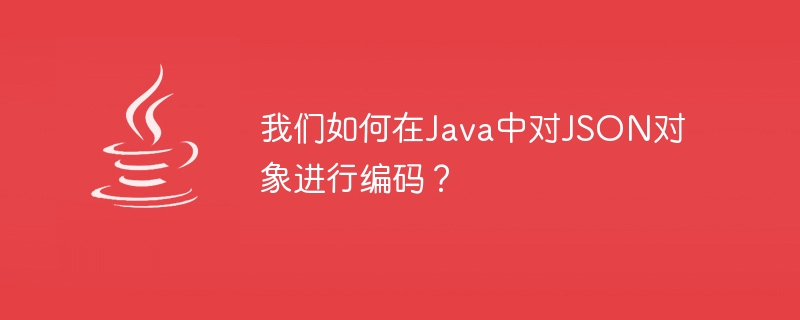Maison >Java >javaDidacticiel >Comment encoder les objets JSON en Java ?
Comment encoder les objets JSON en Java ?
- WBOYWBOYWBOYWBOYWBOYWBOYWBOYWBOYWBOYWBOYWBOYWBOYWBavant
- 2023-09-11 14:53:031521parcourir

JSONObject est une sous-classe de java.util.HashMap qui ne fournit pas de commande. Nous pouvons également utiliser un ordre strict des éléments à l'aide de la méthode JSONValue.toJSONString(map), c'est-à-dire implémentée via java.util.LinkedHashMap. p>
Nous pouvons encoder des objets JSON dans les deux exemples ci-dessous.
Exemple
import java.util.*;
import org.json.simple.JSONObject;
public class JSONEncodingTest {
public static void main(String[] args) {
Map<Object, Object> dataMap = new HashMap<Object, Object>();
dataMap.put("Name", "Adithya");
dataMap.put("Age", new Integer(25));
dataMap.put("Salary", new Double(25000.00));
dataMap.put("Employee Id", new Integer(115));
dataMap.put("Company", "TutorialsPoint");
JSONObject jsonObj = new JSONObject(dataMap);
System.out.print("Encoding a JSON object: ");
System.out.print(jsonObj);
}
}Sortie
Encoding a JSON object: {"Salary":25000.0,"Employee id":115,"Company":"TutorialsPoint","Age":25,"Name":"Adithya"}
Exemple
import java.io.*;
import org.json.simple.*;
public class JSONEncodingTest1 {
public static void main(String[] args) throws IOException {
JSONObject obj = new JSONObject();
obj.put("Name", "Jai");
obj.put("Mobile_Number", new Integer(995998480));
obj.put("Bank_Balance", new Double(50000.00));
obj.put("Is_A_SelfEmployee", new Boolean(false));
StringWriter out = new StringWriter();
obj.writeJSONString(out);
String jsonText = out.toString();
System.out.print(jsonText);
}
}Sortie
{"Is_A_SelfEmployee":false,"Bank_Balance":50000.0,"Mobile_Number":995998480,"Name":"Jai"}Ce qui précède est le contenu détaillé de. pour plus d'informations, suivez d'autres articles connexes sur le site Web de PHP en chinois!
Déclaration:
Cet article est reproduit dans:. en cas de violation, veuillez contacter admin@php.cn Supprimer
Article précédent:Trouver la somme maximale de deux éléments du tableau en JavaArticle suivant:Trouver la somme maximale de deux éléments du tableau en Java

